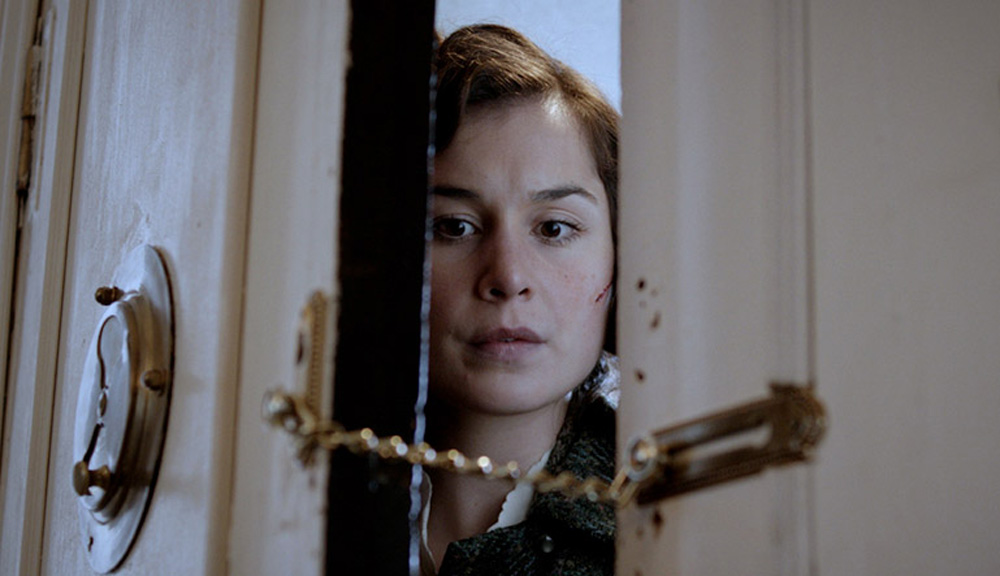“We put a lot of love into this film…and a lot of blood,” teased “Shrew’s Nest” co-director Esteban Roel shortly before the curtain raised on his debut feature at the Toronto Film Festival and while it takes nearly an hour into the film’s 91-minute runtime for the blood to really get pumping, either literally or figuratively, this nasty bit of fun from Spain reflects well on its executive producer, the wonderfully loony Alex de la Iglesia.
However, he doesn’t hold a candle to Martse (Macarena Gómez), the meek and agoraphobic seamstress at the center of “Shrew’s Nest” whose sunken eyes are a result of years of guilt. Told by her father (Luis Tosar) that she was responsible for her mother’s death before abandoning her, she has lived out her days taking care of her 18-year-old sister (Nadia de Santiago) in a flat she can never bear to leave with the money she earns from fixing dresses. When a client suggests her sister will leave the nest eventually and get married, a possibility that appears may happen sooner than later, Martse begins to weave plans to avoid living out her days alone, something that falls into place easier than expected when her upstairs neighbor Carlos (Hugo Silva) lands on her doorstep unconscious after falling down the stairs. When she takes him in, the film begins to play like “Misery” as shot by an amped-up Alfred Hitchcock, with the added wrinkle of the sister who is also doing her damnedest to escape.

Technically, “Shrew’s Nest” is as lush and refined as one would expect from this generation of Spanish helmers working in genre, something that makes it even more fun when the incongruously gruesome carnage begins. There’s clearly a great deal of care obviously put into every turn of a doorknob and creak of the floor to eke out suspense, with Joan Valent’s appropriately baroque string-heavy score and cinematographer Ángel Amoros’ velvet smooth camerawork, which makes one easily forget that essentially the film largely takes place in only one location, give the film a grandeur that allows it’s over-the-top finale fit like a glove. Yet it is Gómez’s performance as Martse that is the film’s main draw, exposed like a raw nerve and fully committed to the madness the role entails. With her python-like eyes hiding within a fragile frame, she’s ideally cast, but she gives her all to make Martse a monster worth caring about.
De Santiago and Silva fare less well as Martse’s captives, with the former a little more undernourished in her reasons for sticking around. Yet “Shrew’s Nest” sets up everything well enough so that the means have an end, finding the tragedy in Martse’s sadly self-aware lament that she’s built a coffin for herself in a house she can never leave as the film itself manages to come alive as a wickedly effective chiller.
“Shrew’s Nest” does not yet have U.S. distribution. It will play the Toronto Film Festival once more on Sept. 14 at the TIFF Bell Lightbox 2 at 6:30 pm.




